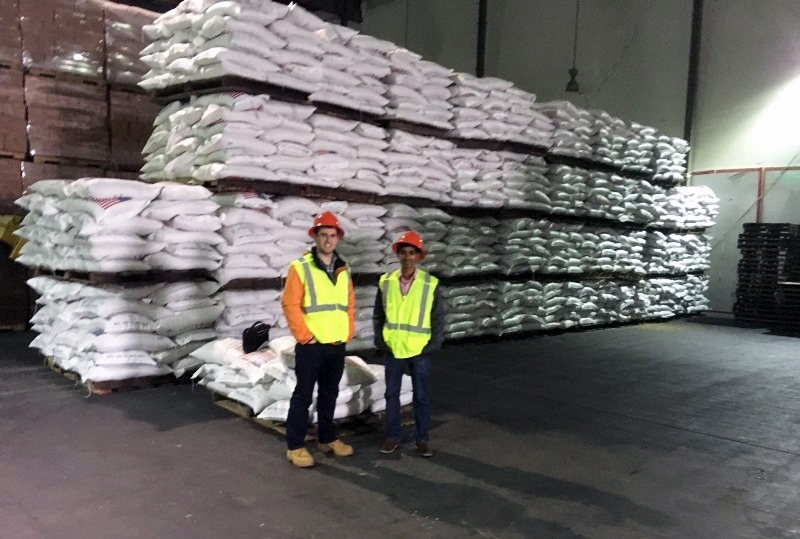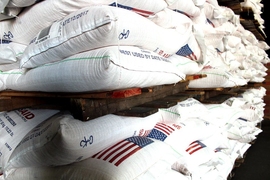Food assistance delivered to the right people at the right time and in the right place can save lives. In 2016 alone, the U.S. Agency for International Development (USAID) delivered over 1.7 million metric tons of food assistance to over 30 million people in 50 countries around the world. However, USAID estimates that over $10 million of that food never made it to the plates of people in need due to spoilage and infestation.
Proper food assistance packaging can be a major contributing factor toward preventing spoilage and infestation. The right kind of packaging can also reduce the need for costly fumigation — which also has the potential to harm human and environmental health if misapplied — and diversify the types of commodities that can be shipped to communities in need, improving recipient satisfaction and nutrition.
MIT researchers have just released a new report detailing an experimental study examining how different packaging approaches and technologies can reduce cost and improve quality of food assistance procured in the United States and shipped abroad.
The report, “New Packaging Types as Innovative International Food Assistance Instruments,” details the study design and findings of the latest experimental evaluation implemented by the Comprehensive Initiative on Technology Evaluation (CITE), a program supported by the U.S. Agency for International Development (USAID) and led by a multidisciplinary team of faculty, staff, and students at MIT.
Innovative study design
Rather than conducting studies of these technologies in a lab, MIT researchers worked together with USAID and the U.S. Department of Agriculture (USDA) to run a pilot study on a real procurement of food assistance headed for Djibouti, Djibouti and Durban, South Africa, major points of entry for food assistance in Africa.
Food assistance was shipped in eight different types of packaging, then carefully tracked, monitored, and inspected to determine effectiveness of the packaging. In addition, lessons were documented regarding supply chains and processes along the way. Many food assistance shipments have been using the same packaging for decades, especially paper and woven polypropylene bags. The new experiments tested larger bags, chemical compounds on bags that prevent insects from reproducing, and airtight liners that had the potential to keep out moisture and insects.
“This procurement produced generalizable data on the cost, effectiveness, and feasibility of using new packaging types in the food assistance supply chain,” says Mark Brennan, an MIT Department of Urban Studies and Planning PhD student and CITE researcher leading the project. “Then, through fieldwork, we held interviews and key informant discussions with stakeholders in the food assistance supply chain to cross-validate data from the pilot procurement.”
Recommendations to reduce loss, improve cost effectiveness
At the close of the study, MIT researchers made a number of recommendations for USAID and USDA to consider based on key findings, demonstrating potential for cost savings and quality improvement along the supply chain.
“We found that bio-pesticide treated bags have the potential to decrease the cost relative to standard packaging types, and maintain the quality about as well as the standard packaging type,” Brennan says. “This packaging appears to not require as regular fumigation, which may improve the timeliness of USAID’s food assistance efforts. We also found that larger bags — 20 times larger than the standard packaging type — may bring cost benefits, conditional on some machinery investments along the supply chain. In practice, these bags and the required machinery may be appropriate for USAID warehouses.”
“It is always nice to find a win-win, and the study identifies applications where packaging technology improves cost and effectiveness,” says co-author Jarrod Goentzel, director of the MIT Humanitarian Response Lab and scalability lead for MIT CITE. “There is also a level of confidence that comes from conducting the study through standard procurement processes, thus exposing technologies to the sometimes-harsh realities of a global supply chain.”
Brennan says USAID and food assistance providers like the European Union can now consider incorporating these results into their programming moving forward.
“We also hope that our study will help USAID and other donors and their partners reconsider the role that packaging plays in their supply chain, and its role in improving cost, quality, timeliness, and even recipient satisfaction outcomes,” Brennan says.
"Working with the MIT team was a great experience,” says Greg Olson, the program operations division director for USAID’s Office of Food for Peace. “Without their expertise and ideas we would have never been able to get this project off the ground. It really demonstrated the value to the U.S. Government of working with academic institutions.”
CITE’s research is funded by the USAID U.S. Global Development Lab. CITE is led by principal investigator Bishwapriya Sanyal of MIT’s Department of Urban Studies and Planning, and supported by MIT faculty and staff from D-Lab, the Priscilla King Gray Public Service Center, the Sociotechnical Systems Research Center, the Center for Transportation and Logistics, MIT School of Engineering, and MIT Sloan School of Management.
In addition to Brennan, co-authors on the report include Daniel Frey, Jarrod Goentzel, and Prithvi Sundar. CITE conducted its research in partnership with USAID, USDA, and a range of USAID contractors.







